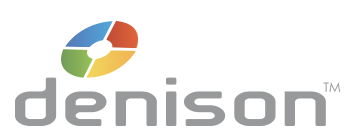The Best Practices Forum began 10 years ago as a unique event that convenes senior executives and business professionals across industries, sectors and continents to share their experiences in culture change and leadership development. This annual event provides a unique opportunity for 100+ participants to dialogue and interact with visionary business leaders, experienced practitioners, and like-minded peers.
An executive panel comprised of five c-suite executives, whose experience spans several industries including hospitality, health care, higher education, transportation logistics and the military convened and offered their insights on the importance of leveraging culture to create change within their organizations.
Panelists included:
- Carmen Bianco, President, MTA New York City Transit
- David Brandon, Director of Intercollegiate Athletics, University of Michigan
- Deborah Marriott Harrison, Global Officer, Marriott Culture & Business Councils, Marriott International, Inc.
- Mark Heinrich, Commander and Chief of Supply Corps, Naval Supply Systems Command (NAVSUP)
- Charles Wirth, CEO, Sutter Physician Services
Here are a few of our key takeaways from this panel discussion:
Leaders experience common challenges.
- External forces bring negativity into the organization, but it’s important to set appropriate expectations and help employees remain positive even in down times.
- Attracting the right talent for your company can be a challenge; your company’s culture has a significant impact on attracting and retaining the talent you seek, and building a strong culture is a leadership responsibility.
- Setting appropriate expectations is important, but can be challenging, as you want to set your organization up to consistently exceed expectations.
Make work fun to keep energy levels high.
- Generating a bit of friendly competition is great for employee morale and keeps energy levels high. Hold challenges with incentives and recognition on a regular basis.
- Employees like to see their leaders in situations that they may not have experienced them in before – panelists suggested starring in funny videos, dressing as Santa Clause to hand-deliver holiday bonuses, and working the front-line with their employees.
Hindsight is always 20/20.
- Getting alignment at the top of the organization is crucial to the success of the culture change effort. Misalignment at the top can slow the change efforts down and hinder the final outcome.
- Create a bigger sense of urgency within the organization to get the change efforts moving and do it earlier in the change effort process. Going fast maintains momentum, and giving employees ownership over the process ensures the process will happen quickly and effectively. Senior leaders can have a hard time challenging assumptions, but it’s important to know that employees can overcome those.
- Understand the targeted impacts on the various groups that the change efforts will effect, and keep track of the changes that are happening in the organization simultaneously. Some helpful ways of doing this are better scheduling, resetting expectations and bolstering your company’s resources.
Maintain intensity but remain patient.
- Intensity comes from a deep level of caring for people. If employees know they are a key part of the culture change process, they are more likely to buy in to the efforts.
- Celebrating small wins and sharing progress toward goals (including failed attempts) with the organization will keep energy high to sustain the change efforts.
Do any of these ideas especially ring true for you? What other things are important for leaders to keep in mind as they lead culture change efforts in their organizations? Please share in the comments below!





